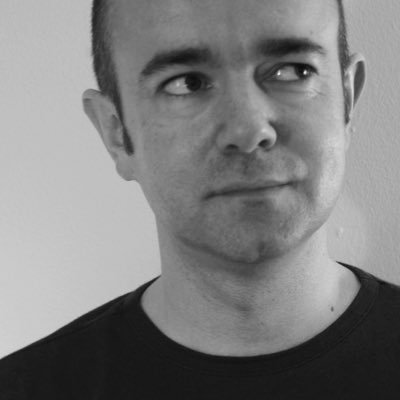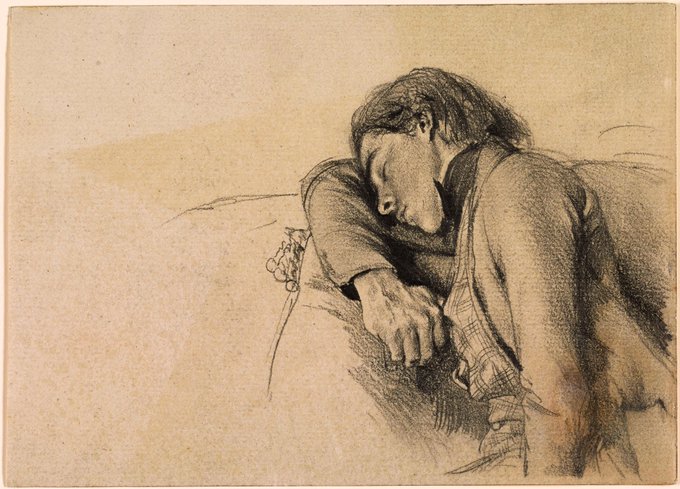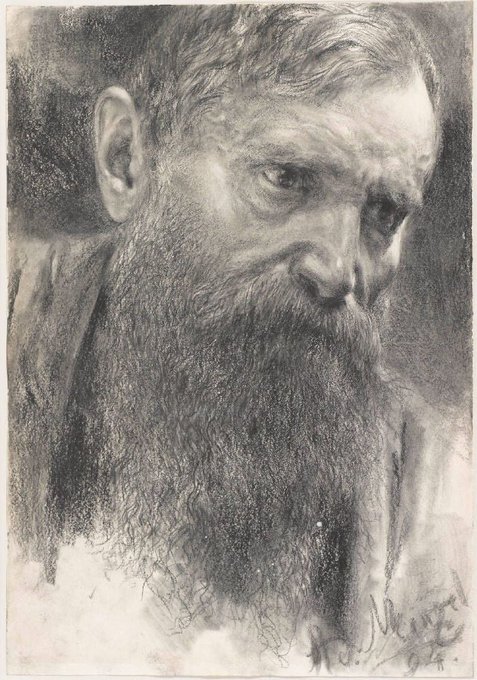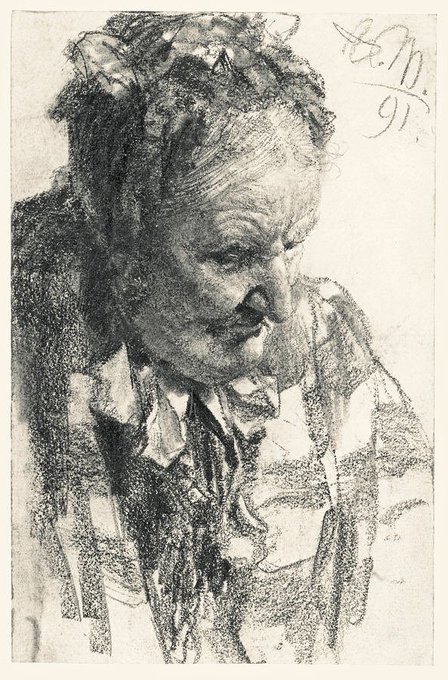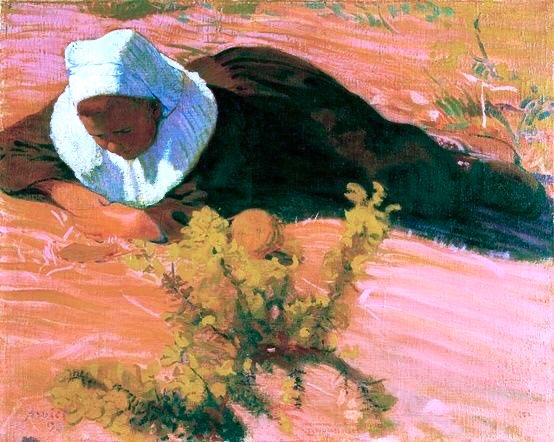Not surprisingly Menzel prepared to the ultimate degree for his great set-piece paintings & these are marked by a liveliness & freedom of expression that I consider far surpass these conceptual works
Menzel drew everyone with great empathy & seemed to seek out older people to draw. His portraits are some of the most moving images.
By the new century he was enormously assured as a painter with each brushstroke performing exactly its work. Blossoming Orchard (1916), Hans Adam (1912), Dahlia Path (1913) & Seated Girl (1915)
From 1900 his critical success is built. Around that time he moved to Oschwand where his home became a nexus for artists & writers. Oschwand (1911), Women in the Garden (1910), Nude (1913) & Amy Moser (1910)
As the decade progressed he integrated the Pont Aven & pointillist styles into his work. Breton Woman in the Trees (1893), Otti (1894) & Oskar Kurt (1894)
Pont-Aven (1892), Still Life (1892), Breton Girl (1893) & Old Breton Woman in the Sun (1893). His work & that of the Irish painter, Roderic O’Conor are v similar at this time - with the latter being more advanced
Born in Solothurn, he attended the Academy of Fine Arts in Munich (1886-8), before going to the Académie Julian in Paris. Street in Munich (1887/8), Self-Portraits (1889) & Giacometti at the Window (1900)
At this stage in his life the isolation of his deafness, his ill health & his fears for his sanity led to his retreating to a farmhouse outside Madrid. There he created his Black Paintings in despair at the crackdown of the Spanish King & the Roman Catholic Church.
In painting the Madhouse there is a real sense that Goya worried that this might be where he would end up. The Young Ones (1812-14), Mariano Goya (his grandson, 1812-4), Duke of Wellington (1812) & The Madhouse (1812-4)
His two portraits of Zarate show his fascination with the actress. The aloof & sophisticated 1805 work is an essay in subtle colours. Doña Antonia Zárate (1805 & 1810-11), Water Carrier (1810-12) & Doña Narcisa Baranana de Goicoechea (1810)
